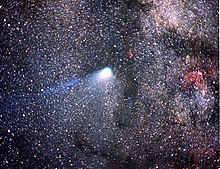Dari Abu Sa'id r.a katanya: (Pada suatu hari) Rasulullah s.a.w masuk ke tempat sembahyangnya, lalu dilihatnya beberapa orang sedang gelak ketawa, Baginda s.a.w pun menegur mereka dengan bersabda: "Ketahuilah! Sesungguhnya kalau kamu banyak menyebut dan mengingati perkara yang memusnah dan menghilangkan perasaan kesenangan tentulah peringatan mengenainya akan menghalang kamu daripada melakukan apa yang aku lihat ini, maka hendaklah kamu selalu mengingati dan menyebut perkara yang memusnah dan menghilangkan perasaan kesenangan, iaitulah maut, kerana sesungguhnya pada tiap-tiap hari kubur menyeru, katanya: "Akulah rumah dagang, akulah rumah yang sunyi sepi, akulah rumah yang penuh dengan tanah, akulah rumah yang penuh dengan ulat". Maka apabila hamba Allah yang mukmin dikebumikan, berkatalah kubur kepadanya: "Dipersilakan dengan segala hormatnya! Ketahuilah sebenarnya adalah engkau - kepada ku - sekasih-kasih orang yang berjalan atas ku, oleh itu apabila engkau sampai kepadaku dan diserahkan urusanmu kepadaku pada hari ini, maka engkau akan melihat layananku kepadamu'; Kubur itu pun menjadi lapang baginya seluas mata memandang, serta dibukakan baginya sebuah pintu ke Syurga, (lalu datang kepadanya sebahagian dari bau Syurga dan udaranya, serta ia dapat mencium dari baunya yang semerbak harum dan merasa senang hati dari segala yang dilihatnya dalam Syurga itu). Dan sebaliknya apabila oarang yang berdosa atau orang kafir dikebumikan, berkatalah kubur kepadanya: "Tidak layak engkau disambut dan dipersilakan; ketahuilah sebenarnya engkau - kepada ku - adalah sebenci-benci orang yang berjalan atasku; oleh itu apabila engkau sampai kepadaku dan diserahkan urusanmu kepada aku pada hari ini, maka engkau akan melihat apa yang aku buat kepadamu". Nabi s.a.w bersabda lagi: "Kubur itupun mengepitnya sehingga berselisih tulang-tulang rusuknya". Kata rawi hadis ini: Nabi s.a.w , (sambil bersabda menerangkan yang demikian, lalu Baginda s.a.w) memasukkan jari-jari sebelah tangannya dicelah jari-jari yang sebelah lagi, kemudian Baginda s.a.w bersabda lagi: "Dan dilepaskan kepada orang itu tujuh puluh ekor ular besar yang kalaulah seekor di antaranya menghembuskan nafasnya di bumi nescaya tidak akan tumbuh sesuatu pun dari tumbuh-tumbuhan atau tanaman selagi dunia ini masih wujud, kemudian ular-ular itu akan mematuk-matuknya dan meluka-lukakannya sehingga ia dibawa untuk dihisab (dan menerima balasan)". Kata rawi hadis ini: Nabi s.a.w bersabda lagi: "Bahawa sesungguhnya kubur itu adalah sebuah taman dari taman-taman Syurga atau sebuah gaung-gaung Neraka".
(H.R: Abu Sa'id r.a)













